|
By definition, a taproot is the single root of a plant that extends deep into the soil to supply the above-ground plant with nutrients. My definition of a taproot is YUM! It is such a shame these vegetables are grown below ground because many are just too pretty to hide. Maybe that's their plan: to hang out underground and develop earthy flavor notes and then when plucked from the earth it's like a walk down the red carpet showing off their textured and colorful skin. Taproots such as parsnips, beets, carrots, and celery root have been around for ages and still shine as cooler weather favorites. I love what a little cool weather can do to sweeten up parsnips and how a hot oven will transform the flesh into to a golden sweet vegetable dish. Look for different varieties of taproots at your local market and follow the guide below to incorporate them into all your fall and winter meals. Jicama 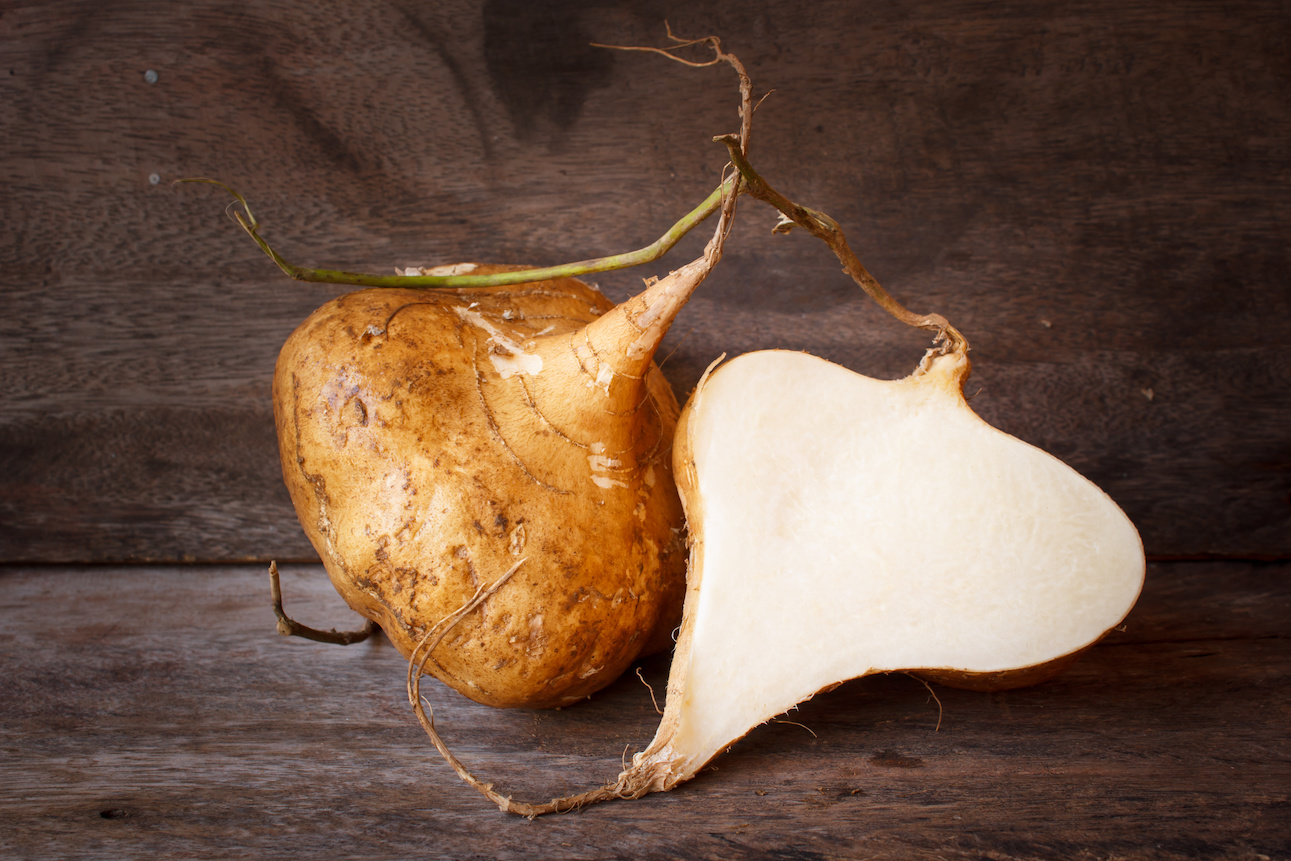 Look for: Heavy for their size, no mold, blemish-free and firm skin. Storage: Vegetable bin of refrigerator Look for something that looks like a brown skinned turnip and slightly larger. That's about the only similarity. Jicama flesh is crisp and can be eaten raw or cooked. Even cooked it maintains the crisp texture. It's lovely served raw in salads with simple vinegar and oil dressings along with additional vegetables such as bell peppers, red onion slices, and roasted or grilled corn. It also works well as a substitute for water chestnuts in salads and stir-fries. Parsnips 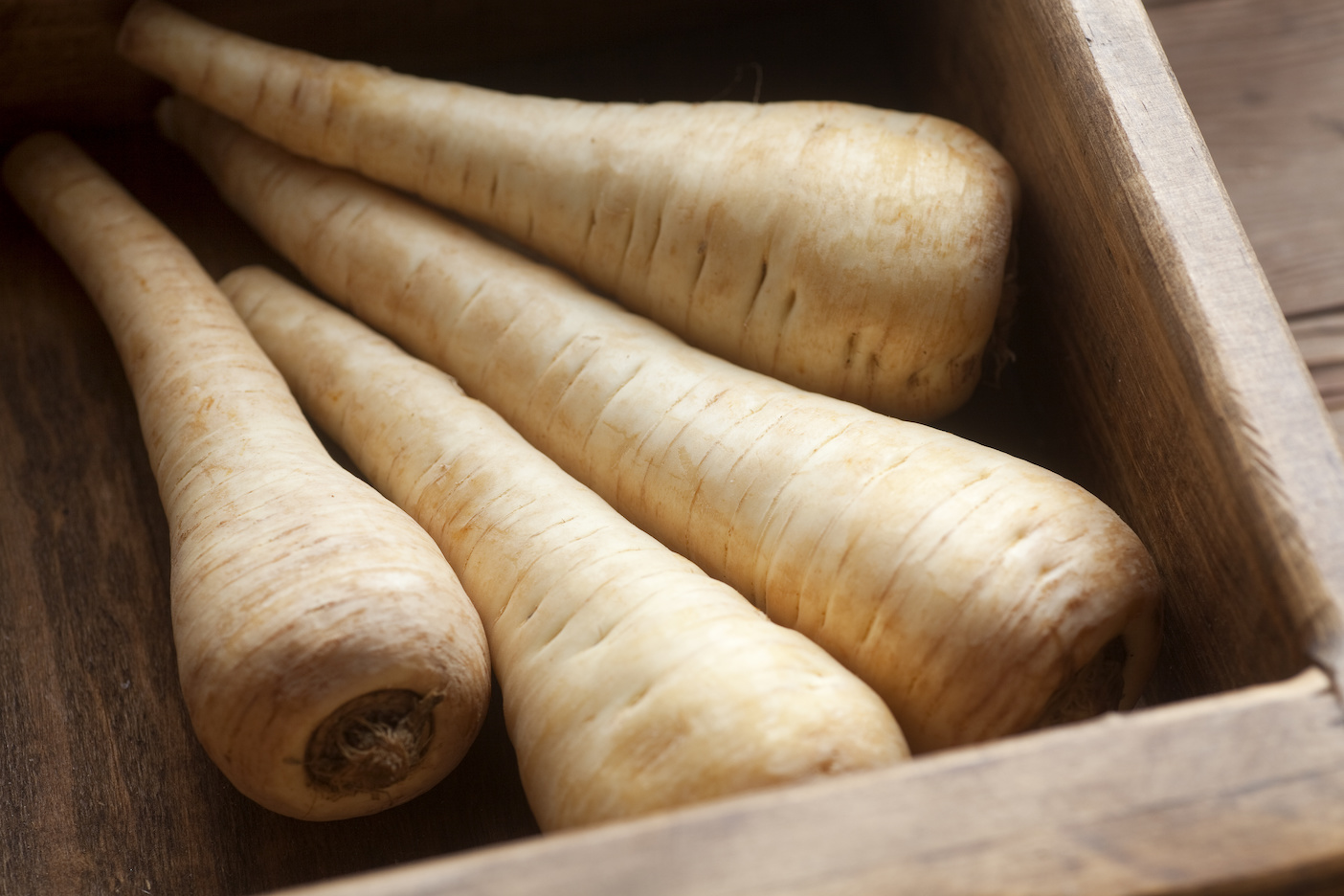 Look for: Blemish-free and firm skin, under 8 ounces each as the larger roots can become too fibrous Storage: Vegetable bin of refrigerator Wait until there is frost on the pumpkins before you harvest your parsnips, or pick some up at the store. Cool weather will sweeten the flavor of your parsnips. These taproots were a staple on European tables long before the potato. Families dined on them as a side dish during dinner and then again as part of the sweet course. When beet sugar was first introduced, it was not affordable so many cooks added pureed parsnip instead of beet sugar to cakes and breads. To prepare in the microwave, peel and cut into rounds or strips. Microwave in a covered dish with water on high for 5 minutes. Generally 8 ounces of peeled parsnips need 3/4 cup water. My favorite preparation for a cool night is peeled and roasted in a 375 degree oven until golden brown. Beets  Look for: Firm, small beets with green stems and leaves still attached. Leaves should be green without any yellow coloring. Buy a rainbow of beets; red, purple, orange or golden. Storage: Remove beet stems and leaves before storing. Wash the leaves and store in a separate container. Leaves are perfect sautéed or in a salad. The leaves will only last two days while the roots will store nicely for several weeks. The "apron stainer" root can be found in my kitchen year round. I grew up hating beets because they always tasted like dirt. Then I realized was that my mom was the only one in the family who liked beets so we did not grow them on the farm. She would purchase them canned. I still to this day will not eat a canned beet but savor the fresh variety slow-roasted in my oven, which mellows their earthy flavor. Beets are wonderful in salads, but they also find their way into soups and cakes (we have a Dark Chocolate Cake recipe in "The SparkPeople Cookbook" that uses beets as a secret ingredient). Next time you make a red velvet cake, swap in pureed beets rather than large amounts of red dye. I must say I haven't tried this one but cooked, dried beets can also be used as a substitute for coffee. (Keep that one in the back of your mind for the next time you are out of coffee and house bound.) If you are new to beets try this recipe, you will be hooked on beets: Roasted Beet Salad. Carrots 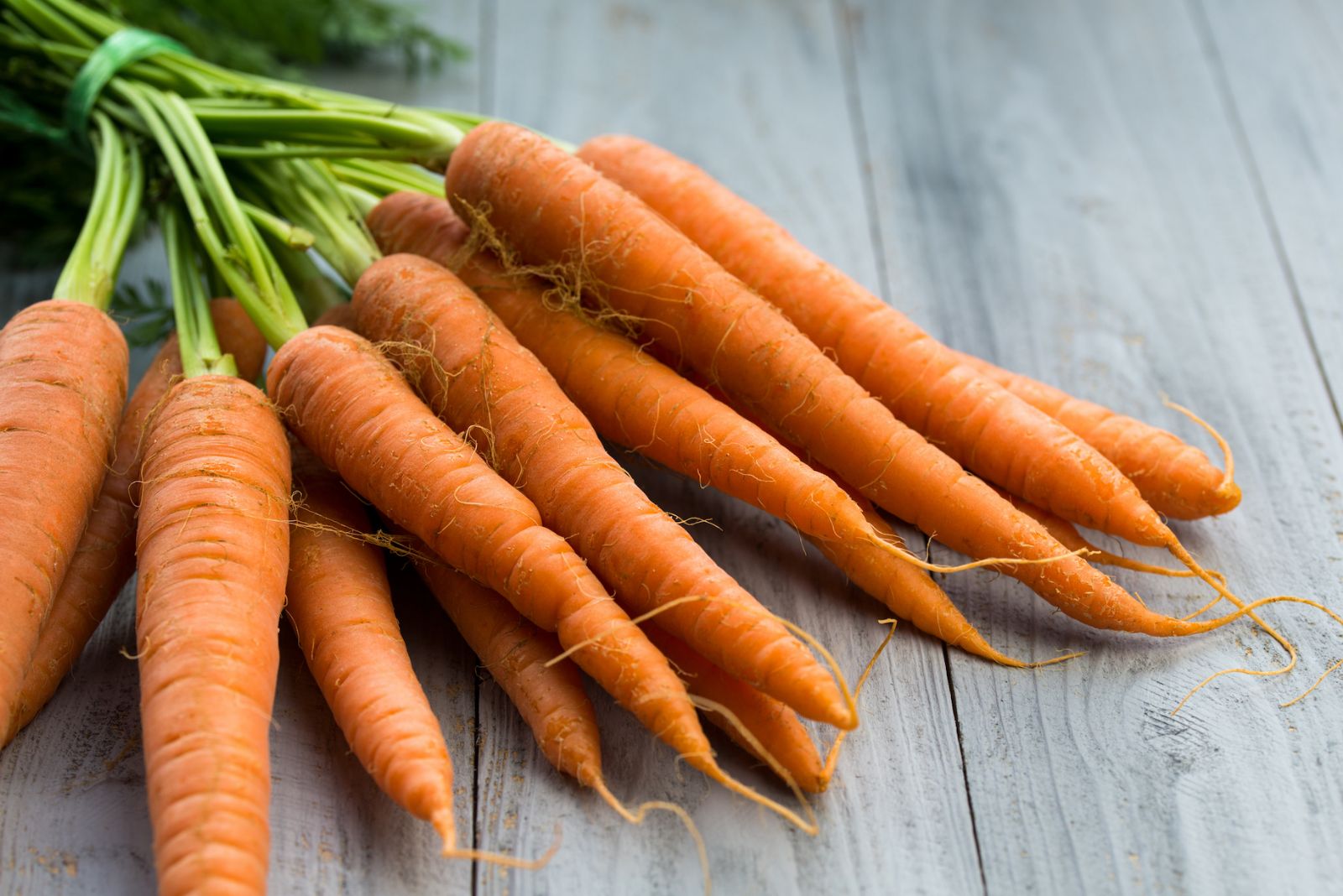 Look for: Purchase with green stems still attached. Select small carrots as large ones can become too fibrous. Storage: Remove the green stems before storage in refrigerator. If stems remain attached they will shorten the carrot's life. If buying bagged, look for those that are vibrant orange, without dried-out stem ends. The carrot has been a symbol of reward and inspiration. Yes, I would say that is true in most kitchens. I can't name a family who has not smiled when a dish of caramelized carrots are pulled from the oven and placed on the table. As with beets, select a rainbow of colors. Look for yellow, red, and purple carrots at your local market. Eat them raw in salads or slow roasted for a change of pace. (The Cumin Carrots in the cookbook are one of my favorite recipes!) Celery Root (Celeriac)  Look for: Heavy and firm celery root without any bruises. The root will be smell faintly of celery and will be ugly as sin. Storage: Store unpeeled in refrigerator. If purchase with the leaves and stems attached, remove before storing. Celery root is also known as celeriac. To some, it is not the prettiest looking taproot. It can have small finger like tubes twisting and turning around itself. Deep peeling is required due to the knobby surface. It's lovely raw or cooked and perfect for an end of meal breath refresher. Peeled celery root will turn brown quickly so always have a lemon on hand to squeeze onto the flesh or cook immediately after cutting. Give a celery root and potato mash a try. Simply cook equal amounts of celery root and potato in simmering water until tender then mash as normal. (Go easy on the salt, milk and butter--the sweet and fragrant celeriac needs little seasoning.) Want more healthy recipes from me and fellow SparkPeople members? Be sure to subscribe to SparkPeople's Recipe of the Day email. Click here to sign up! Like this blog? Then you'll love "The SparkPeople Cookbook: Love Your Food, Lose the Weight." |
Related Entries
More From SparkPeople
|









.jpg)

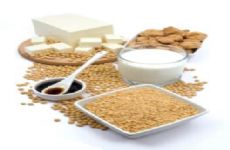

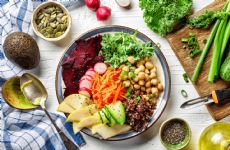






.jpg)


